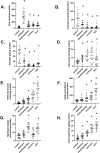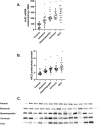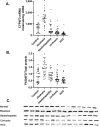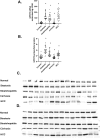The CYP4/20-HETE/GPR75 axis in the progression metabolic dysfunction-associated steatosis liver disease (MASLD) to chronic liver disease
- PMID: 39959811
- PMCID: PMC11826315
- DOI: 10.3389/fphys.2024.1497297
The CYP4/20-HETE/GPR75 axis in the progression metabolic dysfunction-associated steatosis liver disease (MASLD) to chronic liver disease
Abstract
Introduction: Metabolic-dysfunction-associated steatosis liver disease (MASLD) is a progressive liver disease from simple steatosis, steatohepatitis, fibrosis, cirrhosis, and hepatocellular carcinoma. Chronic liver diseases (CLDs) can lead to portal hypertension, which is a major cause of complications of cirrhosis. CLDs cause structural alterations across the liver through increased contents of extracellular matrix (ECM), driving dysfunction of liver sinusoidal endothelial cells (LSECs) alongside hepatic stellate cells (HSCs) and activated resident or infiltrating immune cells. Bioactive arachidonic metabolites have diverse roles in the progression of MASLD. Both secreted levels of 20-hydroxyeicosatetraenoic acid (20-HETE) and epoxyeicosatrienoic acid (EET) are elevated in patients with liver cirrhosis.
Methods: CLD samples were evaluated for changes in free fatty acids (FFA), cholesterol, bilirubin, bile acid, reactive oxygen species (ROD), lipid peroxidation, myeloperoxidase activity and hydroxyproline levels to evaluate the degrees of liver damage and fibrosis. To address the role of the CYP4/20-HETE/GPR75 axis, we measured the amount and the synthesis of 20-HETE in patients with CLD, specifically during the progression of MASLD. Additionally, we evaluated gene expression and protein levels of GPR75, a high-affinity receptor for 20-HETE across CLD patient samples.
Results: We observed an increase in 20-HETE levels and synthesis during the progression of MASLD. Increased synthesis of 20-HETE correlated with the expression of CYP4A11 genes but not CYP4F2. These results were confirmed by increased P4504A11 protein levels and decreased P4504F2 protein levels during the development and progression of MASLD. The gene expression and protein levels of GPR75, the major receptor for 20-HETE, increased in the progression of MASLD. Interestingly, the CYP4A11 and GPR75 mRNA levels increased in steatohepatitis but dramatically dropped in cirrhosis and then increased in patients with HCC. Also, protein levels of P4504A11 and GPR75 mirrored their mRNA levels.
Discussion: These results indicate that the CYP4A11 and subsequent GPR75 genes are coordinately regulated in the progression of MASLD and may have multiple roles, including 20-HETE activation of peroxisome proliferator-activated receptor α (PPARα) in steatosis and GPR75 in CLD through either increased cell proliferation or vasoconstriction in portal hypertension during cirrhosis. The abrupt reduction in CYP4A11 and GPR75 in patients with cirrhosis may also be due to increased 20-HETE, serving as a feedback mechanism via GPR75, leading to reduced CYP4A11 and GPR75 gene expression. This work illustrates key correlations associated with the CYP4/20-HETE/GPR75 axis and the progression of liver disease in humans.
Keywords: 20-HETE; CYP4A11; GPR75; MASLD; chronic liver disease.
Copyright © 2025 Hardwick, Song, Rote, Leahy, Lee, Wolf, Diegisser and Garcia.
Conflict of interest statement
The authors declare that the research was conducted in the absence of any commercial or financial relationships that could be construed as a potential conflict of interest.
Figures







References
Grants and funding
LinkOut - more resources
Full Text Sources
Research Materials

